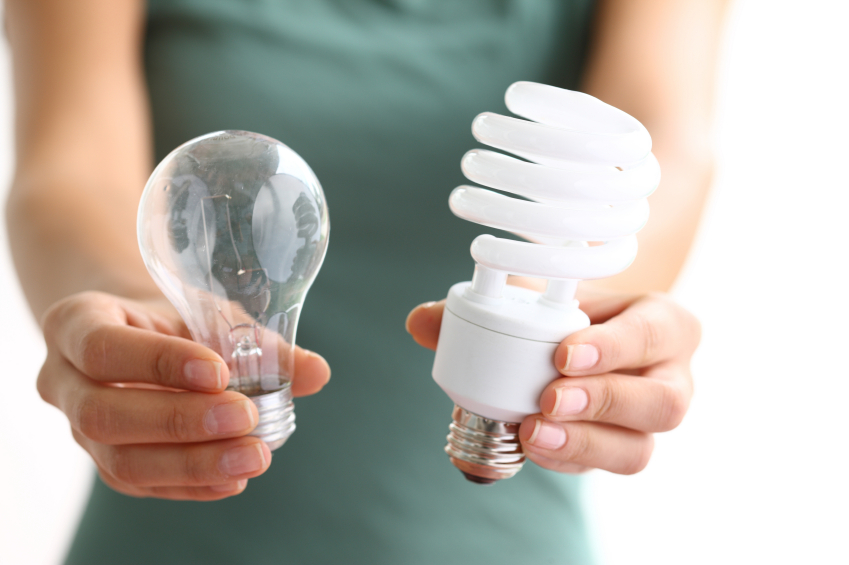Pick the Right Bulb and Light Up Your Life
Which type of light bulb is right for you? Incandescent bulbs are no longer the only option for lighting. They do cost less up front, but a compact fluorescent or LED light bulb can put $20,000 in your pocket throughout the 60,000 hours of its lifetime.
Incandescent bulbs have essentially had the same design since their invention in 1879. They are the least expensive lighting solution with an average cost of around 50 cents per 6-watt bulb. You will pay far more in electricity however, and will have to replace an incandescent light bulb sooner than with other varieties. Almost 90 percent of an incandescent bulb’s energy is used for generating heat, where the other 10 percent is converted to light.
When you use incandescent bulbs, you can save yourself a bit of money by making sure that the light switched off when they’re not needed. In parts of the house where the family doesn’t spend much time, like in the basement or the attic, an incandescent bulb is fine, but there are much better solutions for other parts of the house that need to be illuminated more regularly.
Compact fluorescent (or CFL) bulbs are the twisted tubes you see on store shelves. They use almost 75 percent less energy than incandescent light bulbs, saving a lot of money over time. In addition, these bulbs last about 10 times longer on average. They do cost a little more up front, most likely in the $3 range, but they do make up for that with substantial long-term savings.
You do want to be careful when choosing these lights. The color of the light emitted by some of the bulbs can be unflattering to skin, but that is difficult to know before you install them. Because of this, you may want to try one out before you purchase them for your whole home. Compact fluorescent bulbs also include a small amount of mercury. This will make them hazardous to the environment if their disposal is not handled in a safe manner. Many home improvement stores offer recycling programs that will allow you to reduce energy consumption and be eco-friendly when they are replaced.
The US Government has established a program called Energy Star to provide relative ratings for items such as light bulbs to help consumers buy products that are environmental friendly.
As you shop for light bulbs, look at the Energy Star ratings to understand how much energy will be consumed and what the life of the bulb will be. Some Energy Star compact fluorescent bulbs have a warranty providing replacement or a refund of the bulb’s cost if the its life cycle is shorter than what was promised by the manufacturer. Check the packaging for this information.
LED bulbs are the latest technology in lighting. They give off very little heat while maximizing the output of the bulb. While many cost in the vicinity of $20 or $30 each, they can run up to $100 per unit. Changing out all your bulbs throughout the house could cost a pretty penny, so you will need to consider whether it’s worth it. Like most new technologies, the price is expected to drop over time. These bulbs can last up to 50,000 hours, which means they will almost never need to be replaced.
LED bulbs use powerful and direct light-emitting diodes and do not get hot like incandescent bulbs. This makes them safer and more efficient to use, especially in commercial situations where the lights must be left on for long periods of time. In colder climates, the coolness of their use can make them less desirable because they will not help with heating the room. In Alaska there have been reports that heat bills actually go up after homeowners switched to LED light bulbs. In most places, however, the cooler running output helps to reduce the incidence of fires and significantly lower energy costs.
Which type of light bulb is right for you?
Before deciding which kind of light bulb to install, take a good look at your initial and running costs, what your illumination needs are, and what your budget will support. Most families benefit from using different lighting options in different parts of the home.




